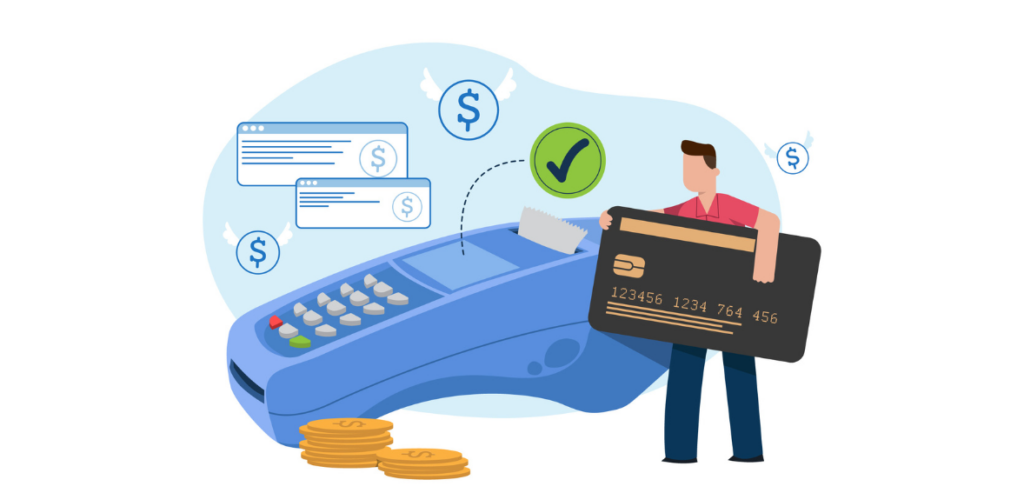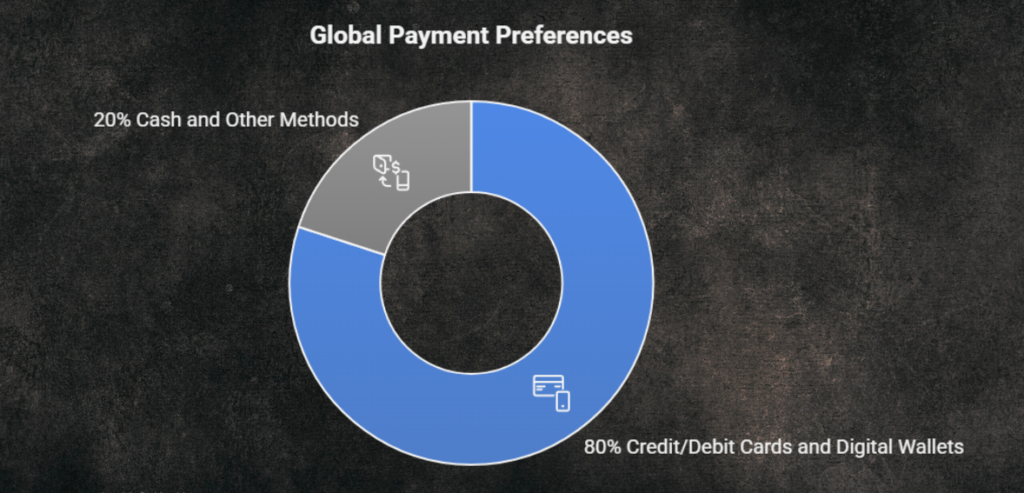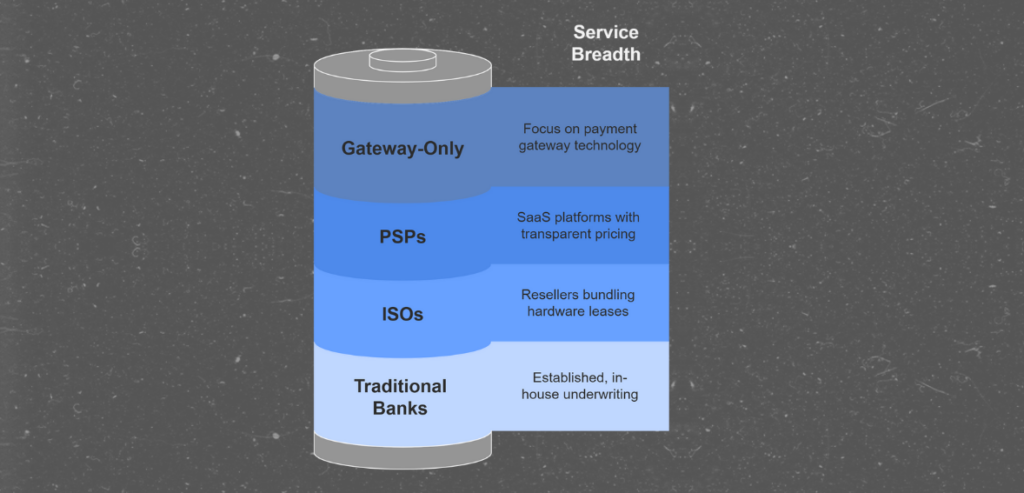Merchant accounts are necessary for any merchant who wants to accept payment by credit card or debit card. This type of account connects the business with its customers, as well as the banks’ networks through which transactions are made. But not all merchant accounts are equal. Some fall into the category of high-risk merchant accounts, which are subject to stringent rules, costs, and scrutiny that may be more burdensome than those in the non-high-risk category.
Some industries and business models are flagged as “high-risk” by banks and payment processors since they are more susceptible to chargebacks, fraud, or regulatory scrutiny. This category includes, for example, online gaming applications, subscription models, travel agencies, and CBD shops. High-risk does not imply that a business is doing something wrong, but providers see transactions as representing greater financial risk.
This article will explain what makes a business high-risk, the industries most affected, the costs involved, and practical tips to secure approval—helping business owners navigate this complex but vital aspect of modern commerce.
What Is a High-Risk Merchant Account?

Not all merchant accounts are alike. Unlike a traditional merchant account that is suited to businesses with low chargeback rates and exposure to fraud, High-Risk Merchant Accounts are designed for businesses with a high rate of exposure to financial uncertainty due to their industries or models.
The designation of “high-risk” is issued by banks, acquiring institutions, and payment processors, not the business itself. They assess multiple factors prior to account approval. A business, for instance, might be labeled high-risk based on a pattern of excessive chargebacks, subscription or recurring billing, international transactions, or being in an industry known for dispute and fraud such as travel, adult entertainment, or CBD sales. Such a designation is also typically applied to firms with a past of credit problems and/or poor credit records.
Why is this important? For financial institutions, risk means liability. With each chargeback a consumer initiates, the bank or processor assumes the risk of loss. Thus, they call for more intense scrutiny for fraud, higher reserve requirements, and greater regulations for high-risk accounts. These measures protect banks and card networks, but they also indirectly impose additional cost and barriers to business owners.
To wrap up, high-risk merchant accounts allow companies in high-risk business to process payments safely but with increased regulation to control the risk to finances. Merchant services are invaluable for businesses and let us discuss more on this.
Industries Commonly Classified as High-Risk
Financial institutions do not just quantify risk based on transaction volumes; they consider the characteristics of an industry. There are industries that will remain high-risk regardless of whether they are legal or not because they are associated with chargeback potential, regulatory concerns, and/or reputation of the payment processer.

Travel & Hospitality: Cancellations and demands for refunds abound with airlines, hotels, and tour operators, so disputes are a common theme. Hence, they need high-risk merchant accounts.
Adult Entertainment: Content platforms and services in this vertical usually are exposed to significant fraud rates and compliance scrutiny, which translates to a lot of chargebacks.
CBD & Cannabis Products: While becoming legal in parts of the U.S., the different state regulations and constantly changing laws are creating a tremendous amount of uncertainty. Due to that, banks categorize these merchants as high-risk to cover their liability.
Gambling & Gaming: Because these are considered to be higher fraud classes, online casinos/sports betting, and (even) gaming platforms with in-app purchases face a higher legal threshold that varies by jurisdiction. Hence, they need high-risk merchant accounts.
Subscription Services & Memberships: Businesses like gyms, streaming platforms, and subscription boxes all utilize recurring billing. This leads to key customers disputing charges that may have been forgotten about or auto renewed, and making the chargeback ratios expensive and high.

E-Cigarettes & Vape Products: Health-related controversies and age-verification challenges make this industry particularly vulnerable to disputes and compliance issues.
Nutraceuticals & Supplements: Products such as weight-loss pills or performance enhancers are frequently targeted for false advertising, causing unhappy customers to request chargebacks.
Tech Support & Call Centers: The services that rely on remote support are highly correlated with scams or aggressive selling, which is the reason that banks categorize them as a high-risk business. Hence, they require high-risk merchant accounts.
Debt Collection & Financial Services: Industries related to lending, debt relief, or credit repair come with regulatory challenges and high levels of consumer disputes.
So, high risk categorization does not equal illegitimacy — rather it is linked with the financial and reputational risk associated within the sector. High-Risk Merchant Accounts are the sole option available for businesses in these space to continue processing payments while navigating compliance.
Costs of High-Risk Merchant Accounts

High-risk merchant accounts have quite a bit more expense than standard merchant accounts. These additional costs to banks and processors are due to greater risk if banks or processors do business with a chargeback-prone, regulatory-challenged or fraud-prone enterprise.
- Processing Fees: While standard merchants typically pay around 1.5%–2.9% per transaction, high-risk merchants may see rates ranging from 2.5%–6%. This difference adds up quickly at scale.
- Transaction Fees: Each card payment can carry an additional $0.25–$1 per transaction, compared to lower fixed fees for low-risk accounts.
- Rolling Reserves: Providers often hold back 5–10% of monthly sales volume in a reserve account for 3–6 months. This protects against future chargebacks but can create cash flow challenges.
- Chargeback Fees: For every customer dispute, merchants may be charged $20–$100 per case, regardless of the outcome. High dispute ratios further increase these expenses.
- Monthly & Annual Fees: High-risk merchant accounts may include gateway fees, PCI compliance fees, and statement fees, often totaling hundreds of dollars per month.
These prices may feel extreme for SMEs and mid-market companies. But without High-Risk Merchant Accounts, a lot of them would be restricted from processing card payments altogether—significantly stunting growth.
In the end, analyzing providers based on cost vs benefit is critical. High-risk industries must balance the increased cost of processing payments with the need to do so securely, ensure cash flow, and protect customer confidence; businesses will always pay service fees, either higher or lower.
Conclusion
If you run a business in an industry that has been flagged as high risk, then getting a merchant account is never easy. In short, high-risk merchant accounts are absolutely essential to accept card payments when the banks refuse applications. Though such accounts are more expensive than other alternatives with higher processing fees, rolling reserves, and increased scrutiny, they allow businesses to operate legally, process customers and create trust.
Just because you earn the high-risk label doesn’t mean you won’t conduct successful business. Knowing the challenges of industry, preparing for cost explanations and working with a trusted provider, merchants can safeguard their revenues whilst doing business with the world. High-risk businesses can transform these accounts into platforms for sustainable growth with transparency, effective chargeback management, and compliance.
Frequently Asked Questions
1. Why do some businesses need a high-risk merchant account?
Some industries have higher levels of chargebacks, fraud, or regulatory scrutiny. Banks and processors classify them as “high-risk” to protect against potential financial liability.
2. What industries are most often considered high-risk?
Common examples include travel, adult entertainment, CBD and cannabis, gambling, subscription services, nutraceuticals, and debt collection. Even legal businesses may be classified as high-risk due to reputational or financial risks.
3. How much more expensive are high-risk merchant accounts?
They typically have higher processing fees (2.5%–6% vs. 1.5%–2.9% for standard accounts), transaction fees, chargeback penalties, and rolling reserves. Costs can add thousands of dollars monthly, depending on sales volume.
4. Can a business switch from high-risk to standard over time?
Yes. If a merchant reduces chargebacks, maintains good financial history, and operates within compliance guidelines, some providers may reclassify them into a lower-risk category.
5. How can businesses improve approval chances for a high-risk merchant account?
Strong documentation, accurate financial statements, a chargeback prevention plan, and working with experienced providers who specialize in high-risk industries all improve approval odds.










